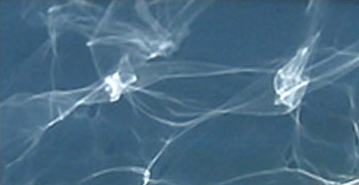Namib Rainbow - OPOD
The Namib Rainbow: A Spectacular Phenomenon in the Desert
The Namib Desert in southern Africa is known for its extreme aridity, with an average rainfall of only 5mm per year near the Atlantic coast. However, on rare occasions, storms can bring heavy rain to the region, creating a breathtaking spectacle known as the Namib Rainbow. Captured by Luc Perrot on a particularly stormy day, this phenomenon showcases the beauty and intricacy of atmospheric optics.
The Namib Rainbow is believed to have been formed by virga, a phenomenon where rain falls from the clouds but evaporates before reaching the ground. This leaves the desert unwetted, but creates ideal conditions for the formation of a rainbow. The rainbow captured in the image by Luc Perrot exhibits numerous supernumerary fringes inside the main primary bow. These fringes are caused by small droplets of uniform size, which would evaporate before reaching the ground.
Rainbows are formed when sunlight is refracted, reflected, and dispersed within raindrops. As light enters a raindrop, it undergoes multiple internal reflections and refractions. The rays that are reflected once inside the raindrop form the primary rainbow. As these rays emerge from the raindrop, they fold over and intersect each other, creating a caustic sheet. This caustic sheet marks the bright rim of the rainbow.
Caustics are not exclusive to rainbows; they can be observed in various natural phenomena. For example, caustics can be seen below sunlit wavy water, causing dancing ripples in swimming pools or stream beds. In the atmosphere, caustics give rise to strongly twinkling stars. They also play a role in the gravitational lensing of galaxies.
Close to the caustic sheet of a raindrop, intersecting rays and waves coalesce and interfere with each other. This interference leads to the formation of supernumerary arcs, which are sets of light and dark diffraction fringes parallel to the caustic sheet. Coincident wave crests result in brightness, while out-of-phase crests create darkness within these fringes.
The Namib Rainbow captured by Luc Perrot showcases the stunning supernumerary arcs, highlighting the intricate diffraction effects associated with the caustic sheet. These arcs add an extra layer of beauty and complexity to the already mesmerizing primary rainbow. It is worth noting that the presence of supernumeraries indicates that the droplets responsible for the rainbow were of uniform size.
The Namib Rainbow is a testament to the wonders of atmospheric optics. It serves as a reminder of the intricate interplay between light, water droplets, and the atmosphere. While this phenomenon may be rare due to the desert's arid nature, when conditions align, it creates a truly awe-inspiring spectacle for those fortunate enough to witness it. The Namib Rainbow stands as a testament to the extraordinary beauty that can arise from the forces of nature.

Namib Rainbow
Captured by Luc Perrot on a very stormy day in the Namib Desert of southern Africa. The average rainfall grades from only 5mm per year near the barren Atlantic coast to ~100mm inland. The actual rainfall is quite variable.
Virga likely made this rainbow leaving the desert unwetted. The many supernumerary fringes inside the main primary bow testify to small droplets of uniform size. Many or all would evaporate before reaching the ground.
Image ©Luc Perrot, shown with permission

Rays through a raindrop. The bright arcs are caustics.

Caustics around shadows of petals floating on water.

Reflection caustics

Supernumeraries are diffraction effects associated with a light caustic.
Light rays reflected once inside a raindrop form a primary rainbow. The once reflected rays emerge in a number of directions. As they do so they fold over and intersect each other. The surface where the rays cluster and intersect most densely marks the rainbow�s bright rim.
It is a caustic sheet that divides space where there are no rays and where rays intersect.
Caustics occur elsewhere, below sunlit wavy water giving dancing ripples along swimming pools or in stream beds, in the atmosphere to give strongly twinkling stars and in strong gravitational lensing of galaxies.
Close to the raindrop caustic sheet, each intersecting ray/wave pair coalesces and interferes. Coincident wave crests give brightness, out of phase crests give darkness. The result is a set of light and dark diffraction fringes parallel to the caustic sheet � The rainbow�s supernumerary arcs.
Note: this article has been automatically converted from the old site and may not appear as intended. You can find the original article here.
Reference Atmospheric Optics
If you use any of the definitions, information, or data presented on Atmospheric Optics, please copy the link or reference below to properly credit us as the reference source. Thank you!
-
<a href="https://atoptics.co.uk/blog/namib-rainbow-opod/">Namib Rainbow - OPOD</a>
-
"Namib Rainbow - OPOD". Atmospheric Optics. Accessed on November 26, 2024. https://atoptics.co.uk/blog/namib-rainbow-opod/.
-
"Namib Rainbow - OPOD". Atmospheric Optics, https://atoptics.co.uk/blog/namib-rainbow-opod/. Accessed 26 November, 2024
-
Namib Rainbow - OPOD. Atmospheric Optics. Retrieved from https://atoptics.co.uk/blog/namib-rainbow-opod/.